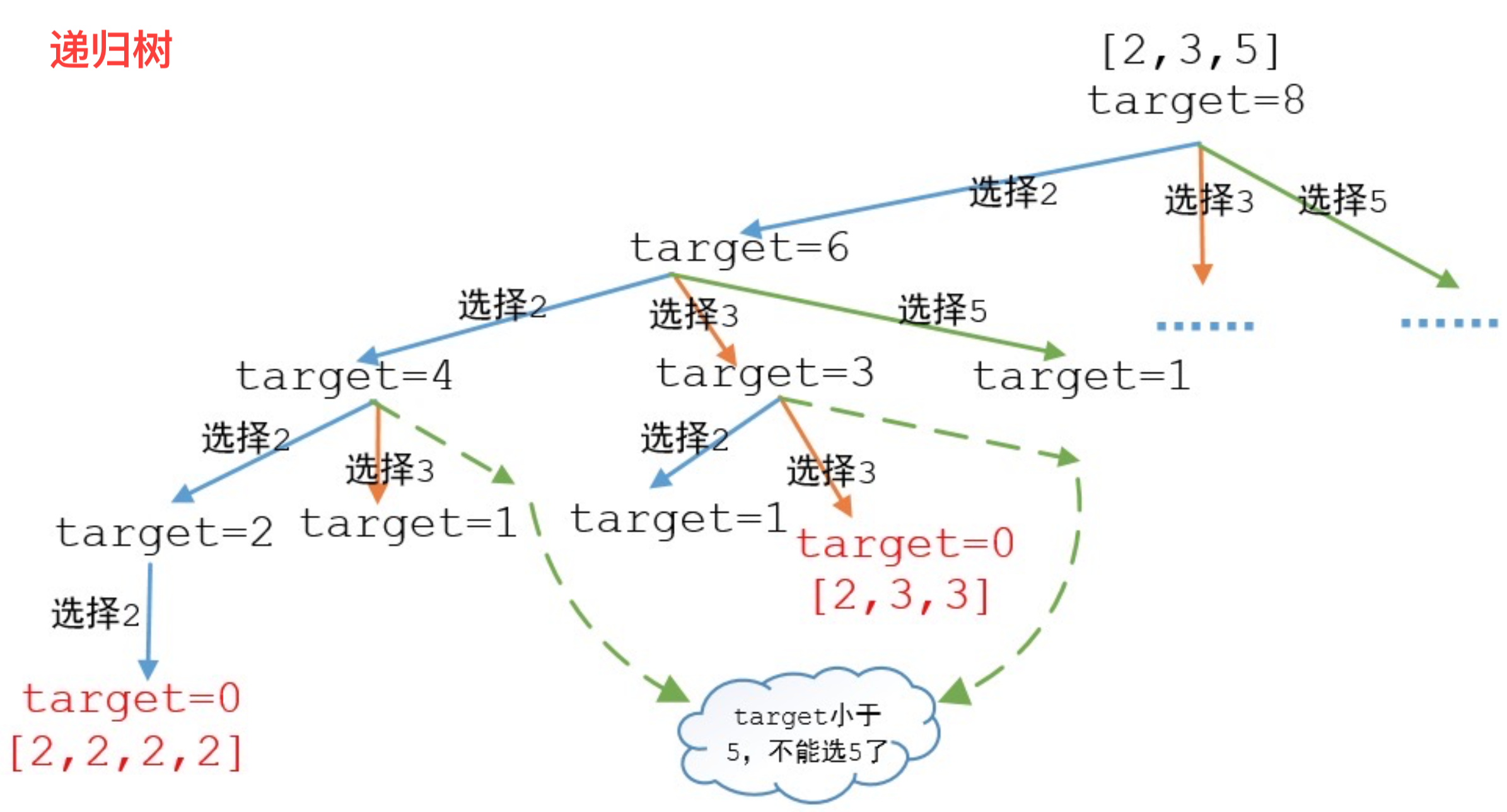汉诺塔
-
题目地址:面试题 08.06. 汉诺塔问题

-
Java 代码
// 递归版本一 class Solution { public void hanota(List<Integer> A, List<Integer> B, List<Integer> C) { int n = A.size(); dfs(A, B, C, n); return; } private void dfs(List<Integer> a, List<Integer> b, List<Integer> c, int n) { if (n == 1) { c.add(a.remove(a.size() - 1)); } else { dfs(a, c, b, n - 1); c.add(a.remove(a.size() - 1)); dfs(b, a, c, n - 1); } } } // 递归版本二 class Solution { public void hanota(List<Integer> A, List<Integer> B, List<Integer> C) { int n = A.size(); dfs(A, B, C, n); return; } private void dfs(List<Integer> a, List<Integer> b, List<Integer> c, int n) { if (n == 1) { c.add(a.remove(a.size() - 1)); return; // 这里必须有,不然栈溢出! } dfs(a, c, b, n - 1); c.add(a.remove(a.size() - 1)); dfs(b, a, c, n - 1); } }时间复杂度:,其中 为圆盘数量。
-
参考链接:
分支污染问题
理解 本贴 分支污染问题 和 递归分支污染对结果的影响。

-
Java 代码
// 体会分支污染问题 class Solution { public List<List<Integer>> combinationSum(int[] candidates, int target) { List<Integer> cur = new ArrayList<>(); dfs(cur, candidates, target); return res; } private void dfs(List<Integer> cur, int[] a, int target) { if (target == 0) { res.add(new ArrayList<>(cur)); return; } for (int i = 0; i < a.length; i++) { if (target < a[i]) continue; cur.add(a[i]); dfs(cur, a, target - a[i]); } } private List<List<Integer>> res = new ArrayList<>(); } // 解决分支污染问题 class Solution { public List<List<Integer>> combinationSum(int[] candidates, int target) { List<Integer> cur = new ArrayList<>(); dfs(cur, candidates, target); return res; } private void dfs(List<Integer> cur, int[] a, int target) { if (target == 0) { res.add(new ArrayList<>(cur)); return; } for (int i = 0; i < a.length; i++) { if (target < a[i]) continue; List<Integer> list = new ArrayList<>(cur); list.add(a[i]); dfs(list, a, target - a[i]); } } private List<List<Integer>> res = new ArrayList<>(); } // 也可以这样写 class Solution { public List<List<Integer>> combinationSum(int[] candidates, int target) { List<Integer> cur = new ArrayList<>(); dfs(cur, candidates, target); return res; } private void dfs(List<Integer> cur, int[] a, int target) { if (target == 0) { res.add(new ArrayList<>(cur)); return; } for (int i = 0; i < a.length; i++) { if (target < a[i]) continue; cur.add(a[i]); dfs(cur, a, target - a[i]); cur.remove(cur.size() - 1); // 利用回溯解决分支污染问题 } } private List<List<Integer>> res = new ArrayList<>(); }
体会
关键还是画出递归树,有递归树就很好写了。






评论区